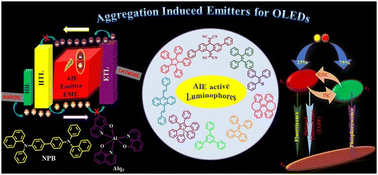In this comprehensive review, we explore the breakthrough potential of organic luminescent compounds with aggregation-induced emission (AIE) for advancing deep-blue organic light-emitting diodes (OLEDs). Traditional fluorescent materials are associated with certain limitations due to aggregation-caused quenching (ACQ), which impacts their efficiency and doping. Accordingly, the introduction of AIE has revolutionized this field by overcoming ACQ, leading to impressive emission efficiency in solid-state AIEgens. Ingeniously designed AIEgens utilize singlet and triplet excitons, surpassing the conventional OLED limits. This review presents the evolution of AIE-based non-doped OLEDs, emphasizing the AIE-active components and effective architectures. Also, the strategies to mitigate fluorescence quenching and integrate hole/electron-transporting elements are presented in detail. High-efficiency deep-blue AIEgens show promise for application in OLEDs in solid-state lighting and versatile displays, including white OLEDs. Thus, we also summarized some deep-blue and blue non-doped OLEDs using AIEgens with TADF and/or HLCT processes, and PLEDs as EMLs are examined to use the residual excitons of triplet states. This review provides a roadmap for the advancement of AIE-based OLEDs, shaping the future of lighting and visual technologies.
